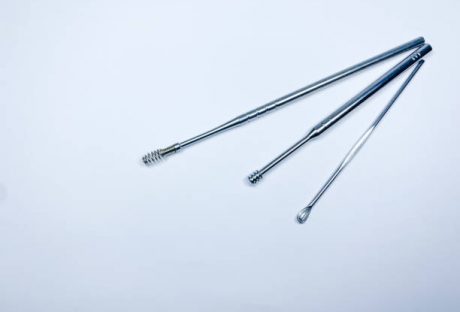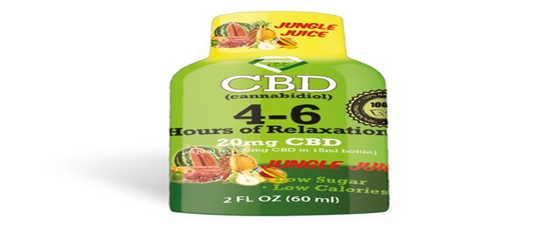You might have heard the term “functioning alcoholic” and wondered what it even means. Then you might be searching the meaning of the term and what it means to be a functional alcoholic. Then let’s throw some light on the meaning of functioning alcoholic for your better understanding.
We often relate alcoholism with people who are addicted and unable to function properly in their lives. This stereotype of alcoholic individuals seems to be not accurate. This is because several individuals who are alcoholics seem to function properly and deal with their daily tasks properly.
If this is the case then why are these individuals living a regular life while being alcoholic? While other groups of alcoholic people are addicted to alcohol but cannot function properly because of their addiction.
Therefore in this article, we not only discuss what is a functioning alcoholic but also how they differ from those with more visible signs of alcohol dependency.
Perception About Individuals Battling Addiction
Your concept or perception of an alcoholic will change when you learn how a functioning alcoholic person works. They are capable of living or maintaining a normal life while battling alcohol addiction.
At one glance you might not even know this person might be alcoholic as they are capable of doing all their daily duties smoothly. Therefore, why was this term created which means someone who is functioning even when dealing with addiction?
This challenges the common stereotype of an alcoholic person who lives an undisciplined and disheveled life. The term “functioning alcoholic” could be used to describe a person’s condition but it is not officially recognized.
In the field of psychiatry, the Diagnostic and Statistical Manual of Mental Disorders (DSM-5) doesn’t recognize this term officially. However, several professionals use this term to describe a specific alcoholic person’s condition.
So understanding the phenomenon of the functioning alcoholic is important as it helps identify people who are going through this hardship. When you recognize a functional alcoholic you can help them get the right treatment which will get them better.
More often than not, functioning alcoholics hide their struggles with addiction while maintaining a normal facade. So, it becomes harder for you to recognize them and get them correctly diagnosed. Therefore you must read this article to know how to identify a functioning alcoholic. So that you can help them get the right treatment for recovery.
What Is A Functioning Alcoholic?
A functioning alcoholic is someone who appears to live a normal life while dealing with alcohol addiction. These individuals you will observe can do all the regular tasks and maintain a lifestyle without alcohol overriding their lives.
Even being addicted to alcohol they can hold down a job and fulfill family obligations. Not only that they can excel in some areas of their lives without alcohol overriding their entire life. Therefore, it becomes hard for you to identify these individuals who look perfectly normal from the outside while dealing with addiction.
These individuals know how to keep their professional and social lives separate from their addiction. You see, functional alcoholics are aware of their alcoholic addiction which helps them hide it easily. They become skilled at hiding their shortcomings from the world.
However, this addiction of a functioning alcoholic does not affect anyone other than themselves. It does affect their own lives if kept unchecked in the long run. As they continue to hide their struggle with alcohol it becomes much more troublesome as time goes on.
Functioning Alcoholics Live In The Grey Area Of Addiction
A functioning alcoholic lives in the grey area of addiction where addiction coexists with competence. While they are functioning like a regular individual they also hide their addiction from their friends, family, or colleagues. So, they operate much more separately than an alcoholic consumed with addiction and a normal non-alcoholic.
So how will you recognize a functioning alcoholic when they are living just like any ordinary person? You see functioning alcoholics often rationalize their drinking habits as rewards for their accomplishments. So, if they can get their work done they reward themselves. Again if they do their duty towards their family they would reward themselves with a drink.
Again their coping mechanism of dealing with the stress of daily responsibilities is through alcohol. So when they accomplish their responsibilities day-to-day they reward themselves with alcohol.
But this facade of normalcy is fragile as they become more dependent on alcohol over time. As they start to deal with life problems with alcohol, this results in psychological issues.
Maintaining a long-term facade of alcohol addiction is not the only problem a functional alcoholic faces but health problems too.
High Functioning Alcoholism vs. Traditional Alcohol Use Disorder
Traditionally you could identify an alcoholic person from their visible signs of dysfunctions. These dysfunctional problems were frequent performance issues, relationship problems, and deteriorating health.
In contrast, high-functioning alcoholics may lead seemingly successful lives, masking their dependency behind a façade of competence. They may hold prestigious positions, maintain social connections, and even drink expensive wine without raising suspicion.
Despite their ability to keep up appearances, high-functioning alcoholics often deal with a significant internal struggle. They might spend considerable effort hiding the extent of their drinking from others and themselves.
This can involve elaborate routines to cover up the smell of alcohol and secret drinking sessions. Again a functional alcoholic persistently worries about being discovered because of their addiction.
You will see that the stress of maintaining a double life can be extremely problematic in the long run. In the long-term, this coping mechanism with alcohol can only affect negatively both physically and mentally.
Along with the stress of hiding addiction with alcohol and dealing with life’s problems a functioning alcoholic is bound to break down at some point. This will lead to their worst fear of revealing their true nature.
It’s this dual existence that differentiates high-functioning alcoholism from other overt alcohol use disorders. Other alcohol disorders are more visible due to their impact on an individual’s life.
Recognizing The Signs Of Alcohol Abuse
There are significant risks to being a functional alcoholic despite its outward appearance. Because their pattern of drinking can be more than seven drinks per week. This leads to health risks in the long term. Again continuous dependence on alcohol to deal with life can have adverse effects on the person’s psychology.
From binge drinking episodes to the inability to stop drinking despite its negative consequences can be some of the recognized risks of alcohol addiction. They may also experience withdrawal symptoms when trying to quit or cut back on alcohol consumption.
Recognizing signs of a high-functioning alcoholic can be challenging as they are good at hiding their addiction. Therefore, it’s essential to identify these individuals and get them diagnosed correctly and get these individuals treated.
It’s important to note that these behaviors can be subtle and easily overlooked, especially when the individual is still managing to fulfill their personal and professional obligations. Over time you will see that the consequences of high-functioning alcoholism become visible.
Be it strained relationships, personality changes, mental health issues, and physical health problems related to alcohol abuse. You will start to see its effects on a functional alcoholic.
Risk Factors And Consequences
Certain factors can increase the likelihood of high-functioning alcoholism, including genetic predisposition, environmental influences, and untreated mental health issues.
While they may avoid some of the immediate consequences associated with traditional alcoholism, such as job loss or legal troubles, high-functioning alcoholics are still at risk for severe health problems, including certain cancers and mental health issues.
These health problems can include liver disease, heart disease, and neurological impairments that may not become evident until later in life. The psychological consequences are equally concerning, potentially leading to depression, anxiety, and other psychiatric disorders that can deteriorate the quality of life.
Moreover, high-functioning alcoholics may face social consequences over time, such as eroded trust in relationships, marital strife, and a gradual withdrawal from social activities as they prioritize alcohol over personal connections.
Despite maintaining a veneer of normalcy, the cumulative effect of these risk factors and consequences can lead to a tipping point where the individual’s ability to function at a high level is compromised.
It is crucial to recognize these long-term risks and understand that the lack of immediate, visible consequences does not diminish the urgency for intervention and treatment.
Seeking Support And Treatment For The High Functioning Alcoholic
Addressing high-functioning alcoholism requires a comprehensive approach involving medical professionals, support groups, and rehab centers in Los Angeles, specializing in addiction medicine.
Loved ones play a crucial role in encouraging their family members or close relatives to seek help, but it’s essential to approach the situation with empathy and understanding. Initiating this conversation can be delicate, as it often involves breaking through a wall of denial built up by the individual over time.
Friends and family need to be informed about the nature of high-functioning alcoholism, to offer non-judgmental support, and to avoid enabling behaviors that can perpetuate the addiction.
The process of seeking support often begins with an honest self-assessment or an intervention by concerned loved ones. This step is vital in helping the individual recognize the extent of their problem and the impact it has on their life and the lives of those around them.
Professional interventionists can be instrumental in this phase, providing the guidance needed to navigate what can be a highly charged situation. Once the individual acknowledges the need for help, the next step involves finding the right treatment program.
Treatment can range from outpatient therapy sessions that accommodate the individual’s work schedule. Or a more intensive inpatient program where you will be required to take a temporary step back from daily responsibilities.
The choice of treatment should be tailored to the individual’s specific circumstances, taking into account their level of addiction, personal responsibilities, and the presence of any co-occurring mental health conditions.
Throughout the recovery journey, ongoing support is essential for maintaining sobriety. Aftercare programs and sober living communities offer continued guidance and support, helping the individual to reintegrate into their daily life with new coping skills and a renewed focus on health and wellness.
Support And Treatment Facilities
Support groups like Alcoholics Anonymous provide a vital lifeline for individuals struggling with alcohol use disorders, offering a sense of community and understanding.
These groups facilitate peer-to-peer support and shared experiences, creating a space where individuals can speak openly about their struggles without fear of judgment.
Treatment facilities offer residential treatment or outpatient tailored programs designed to address the unique needs of high-functioning alcoholics, providing medical supervision during the withdrawal process and equipping them with coping strategies for maintaining sobriety.
These facilities often employ a multidisciplinary approach, combining medical treatment, psychological counseling, and behavioral therapy to address the complex nature of addiction. The programs may include individual therapy sessions, group therapy, educational workshops on addiction, and relapse prevention planning.
In addition to traditional treatment methods, some facilities offer holistic therapies such as meditation, yoga, and art therapy, recognizing the importance of treating the whole person.
The Importance Of Mental Health Resources
Recognizing that alcoholism is not solely a physical dependency but also a mental health problem is crucial. Access to more mental health resources, including therapy and counseling, can help individuals address underlying issues contributing to their alcohol use and develop healthier coping mechanisms.
These resources are vital in treating the emotional and psychological aspects of alcoholism, which often include stress, anxiety, depression, and other mental health disorders that may co-occur with substance abuse.
By providing a supportive environment for open discussion about mental health, individuals can gain insights into the emotional triggers that lead to drinking and learn new strategies for managing these triggers.
Therapy can also assist in repairing relationships damaged by alcohol abuse, rebuilding trust, and improving communication skills. In addition, counseling can offer guidance on how to establish a balanced life. You can set achievable goals, and create a supportive network that fosters their long-term recovery.
Treatment programs need to integrate mental health services as a core component of addiction recovery, called dual diagnosis treatment. This integration ensures that individuals receive a holistic approach to their treatment, addressing all facets of their well-being.
As society continues to destigmatize mental health issues, the hope is that more people will feel empowered to seek the help they need without fear of judgment or stigma.
Ultimately, enhancing the availability and accessibility of mental health resources is a critical step in supporting the recovery journey of functioning alcoholics. Their lasting sobriety helps improve their mental health issues.
High Functioning Alcoholics: Is There Such A Thing?
High-functioning alcoholics can often seem to have it all together, balancing significant responsibilities while battling their addiction in silence.
They are typically individuals who, despite heavy drinking, seem to lead productive lives. They often excel in their careers, maintain social relationships, and uphold daily routines.
This can make it difficult for others and sometimes even for the individuals themselves to recognize the problem. as their success often masks the underlying issues.
We can help individuals struggling with high-functioning alcoholism by raising awareness and providing support. This will help them regain control of their lives and improve their overall life.
Conclusion
It’s crucial to understand that high-functioning alcoholism is a real and serious condition. When you acknowledge its existence you take the first step towards addressing the unique challenges it presents.
With the right resources and support systems, you can improve functioning alcoholic individuals to live a life free from alcohol. You can find them the help they need to recover from alcohol dependency.
Therefore you need to know about functional alcoholism and identify functional alcoholic individuals.
Read Also:






















